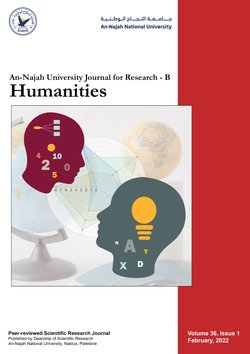Contexts of Transformation and Integration in Palestinian Media Institutions in the Digital Age
Authors:
Article info
2021-10-17
2022-05-15
1231 - 1248
Keywords
- Citizen journalism
- Newsrooms
- Built-in notification
- Digitization
- Media Institutions
Abstract
In this study, we sought to provide an accurate and detailed diagnosis of the transformations witnessed by Palestinian media institutions in light of the new environment of communication, and to know how Palestinian media institutions can establish a new communication model within their organizational structures in line with the new environment of communication in the digital age. It also discussed the mechanisms used by professional journalists in traditional Palestinian media institutions to deal with the contents produced by citizen journalists. In this context, we posed the following problem: What are the contexts of transformation and integration of traditional Palestinian media in the context of communication digitization, and how did citizenship journalism practices employed in newsrooms? In order to answer this problem, we followed the qualitative content analysis approach. The tool of the qualitative approach was the (codified) scientific interviews with editors-in-chief in the local Palestinian media. It sought to activate the participation of citizen journalists in furnishing news spaces, and created platforms for it to communicate with its audience "Crowd Sourcing", and to form supporters for its "crowd journalism" to take advantage of the feature of communicative interaction through social media, and this indicates that smart TV newsrooms are looking forward because Convergence News room
ِAbdallah, O., & Hamouda, A. (2023). Contexts of Transformation and Integration in Palestinian Media Institutions in the Digital Age. An-Najah University Journal for Research - B (Humanities), 37(7), 1231–1248. https://doi.org/10.35552/0247.37.7.2055
[1]O. ِAbdallah and A. Hamouda, “Contexts of Transformation and Integration in Palestinian Media Institutions in the Digital Age,” An-Najah University Journal for Research - B (Humanities), vol. 37, no. 7, pp. 1231–1248, Jul. 2023, doi: 10.35552/0247.37.7.2055.
ِAbdallah, Osama, and Ahmed Hamouda. “Contexts of Transformation and Integration in Palestinian Media Institutions in the Digital Age.” An-Najah University Journal for Research - B (Humanities), vol. 37, no. 7, July 2023, pp. 1231–48. Crossref, https://doi.org/10.35552/0247.37.7.2055.
1.ِAbdallah O, Hamouda A. Contexts of Transformation and Integration in Palestinian Media Institutions in the Digital Age. An-Najah University Journal for Research - B (Humanities) [Internet]. 2023 Jul;37(7):1231–48. Available from: http://dx.doi.org/10.35552/0247.37.7.2055
ِAbdallah, Osama, and Ahmed Hamouda. “Contexts of Transformation and Integration in Palestinian Media Institutions in the Digital Age.” An-Najah University Journal for Research - B (Humanities) 37, no. 7 (July 2023): 1231–48. https://doi.org/10.35552/0247.37.7.2055.
سياقات التحوّل والاندماج بالمؤسّسات الإعلاميّة الفلسطينيّة في الزّمن الرقمي
المؤلفون:
معلومات المقال
2021-10-17
2022-05-15
1231 - 1248
الكلمات الإفتتاحية
- Citizen journalism
- Newsrooms
- Built-in notification
- Digitization
- Media Institutions
الملخص
سعينا في هذه الدراسة إلى تشخيص دقيق ومُفصّل للتّحولات التي شهدتها المؤسّسات الإعلاميّة الفلسطينيّة في ظلِّ البيئة الجديدة للاتّصال، ومعرفة كيف يمكن للمؤسّسات الإعلاميّة الفلسطينيّة أن تؤسّس لنموذجٍ اتصاليٍّ جديدٍ داخل هياكلها التّنظيمية بما يتماشى والبيئة الجديدة للاتصال في الزمن الرقمي، والتطرّق الى الآليات التي يستخدمها الصحفيون المحترفون في المؤسسات الإعلاميّة التقليدية الفلسطينية لمعالجة المضامين التي ينتجها المواطن الصحفي. وفي هذا السياق طرحنا الإشكاليّة التاليّة: ما هي سياقات التّحول والاندماج للميديا الفلسطينية التّقليدية في سياق الرّقمنة الاتّصالية، وكيف وظّفت ممارسات صحافة المواطنة في غرف الأخبار؟ وللاجابة على هذه الإشكالية اتّبعنا منهج تحليل المحتوى الكيفي، إذ تمثّلت أداة المنهج الكيفي في المقابلات العلمية (المقنّنة) مع رؤساء تحرير في الإعلام المحليّ الفلسطيني، وبعد إخضاع مادة العينة للتحليل والدّراسة تمكّنا من الوصول إلى أن المؤسّسات الإعلامية الفلسطينية لم تدّخر جهدًا في تحديث أنظمتها الاتصالية فسعت إلى تفعيل مشاركة المواطن الصحفي في تأثيث المساحات الإخبارية، وأنشأت منصات لها من أجل التواصل مع جمهورها "Crowd Sourcing"، وتكوين أنصار لها "صحافة الحشود" للاستفادة من خاصية التفاعل التواصلي عبر الميديا الاجتماعية، وهذا ينبئ بأن غرف الأخبار التلفزيونية الذكية أصبحت تتطلّع لأن تكون غرف أخبار مدمجة Convergence News room.
ِAbdallah, O., & Hamouda, A. (2023). Contexts of Transformation and Integration in Palestinian Media Institutions in the Digital Age. An-Najah University Journal for Research - B (Humanities), 37(7), 1231–1248. https://doi.org/10.35552/0247.37.7.2055
[1]O. ِAbdallah and A. Hamouda, “Contexts of Transformation and Integration in Palestinian Media Institutions in the Digital Age,” An-Najah University Journal for Research - B (Humanities), vol. 37, no. 7, pp. 1231–1248, Jul. 2023, doi: 10.35552/0247.37.7.2055.
ِAbdallah, Osama, and Ahmed Hamouda. “Contexts of Transformation and Integration in Palestinian Media Institutions in the Digital Age.” An-Najah University Journal for Research - B (Humanities), vol. 37, no. 7, July 2023, pp. 1231–48. Crossref, https://doi.org/10.35552/0247.37.7.2055.
1.ِAbdallah O, Hamouda A. Contexts of Transformation and Integration in Palestinian Media Institutions in the Digital Age. An-Najah University Journal for Research - B (Humanities) [Internet]. 2023 Jul;37(7):1231–48. Available from: http://dx.doi.org/10.35552/0247.37.7.2055
ِAbdallah, Osama, and Ahmed Hamouda. “Contexts of Transformation and Integration in Palestinian Media Institutions in the Digital Age.” An-Najah University Journal for Research - B (Humanities) 37, no. 7 (July 2023): 1231–48. https://doi.org/10.35552/0247.37.7.2055.
An-Najah National University
Nablus, Palestine
Nablus, Palestine
- P.O. Box
- 7, 707
- Fax
- (970)(9)2345982
- Tel.
- (970)(9)2345560
- (970)(9)2345113/5/6/7-Ext. 2628
- [email protected]
- EIC
- Prof. Ismail Warad
